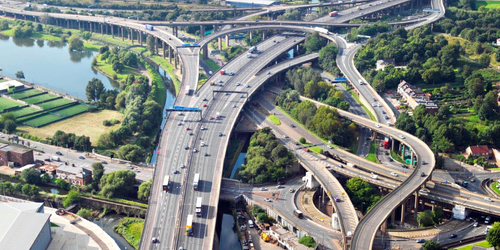Quantifying the Knottiness of a Tangled Network
The nodes of some networks, such as those in a network of professional contacts, are connected by links whose intangibility raises no barriers to the network’s expansion. But in a network where the links are physical structures, such as neurons or polymeric materials, expansion is harder. When physical links cross, they must go over or under each other, which can create tangled and inefficient networks. Now Cory Glover and Albert-László Barabási of Northeastern University in Massachusetts have devised a new metric for quantifying the “tangledness” of a physical network [1]. Applying the metric to real-world networks could reveal inefficiencies in the systems.
Glover and Barabási call their new metric the average crossing number (ACN). To calculate it, they first projected the image of a 3D network onto a series of 2D planes. Once the network was flattened, crossing links were identified and counted. Because each projection had a different point of view, the number and nature of the crossings could differ.
Formally, a network’s ACN should be averaged over the infinite number of possible projections. But Glover and Barabási found that was unnecessary, as the ACN quickly converged to a single value. The pair also derived a readily computable approximation of the ACN and verified that it matched estimated ACNs of several natural real-world networks, including the vascular network in the human lung.
Using their approximation, the researchers then uncovered two factors that reduce a physical network’s ACN: heterogeneity (how widely the number of links between nodes varies) and the presence of communities (groups of similar nodes). Altering these factors in artificial real-world networks, such as subway or road systems, could allow for improvement of the networks’ transport efficiencies.
–Charles Day
Charles Day is a Senior Editor for Physics Magazine.
References
- C. Glover and A.-L. Barabási, “Measuring entanglement in physical networks,” Phys. Rev. Lett. 133, 077401 (2024).




